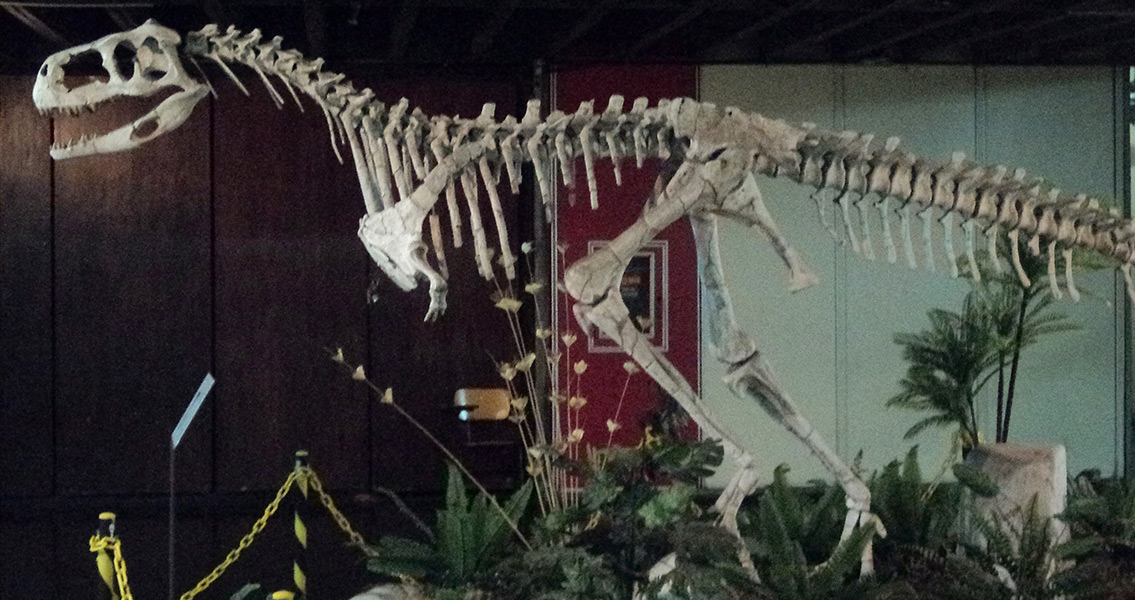<![CDATA[Like so many great discoveries, this one was stumbled upon. PhD student Alessandro Chiarenza with Imperial College London discovered the bone, which had seemingly been left forgotten in a drawer, while visiting the Museum of Geology and Paleontology in Palermo, Italy. Chiarenza and his colleague, Andrea Cau with the University of Bologna, requested and received permission from the museum to analyze the bone and they were able to identify it as belonging to abelisaur - a dinosaur that roamed the earth approximately 95 million years ago during the Cretaceous period. The abelisaur was a carnivorous and predatory dinosaur, characterized by extremely short forelimbs, small and razor sharp teeth, a short deep face and muscular hind limbs. Scientists also suspect it was covered in feathers. The abelisaur in this study would have resided in North Africa, which was a lush savannah at the time, crisscrossed by mangrove swamps and rivers. This ancient world would have been the ideal tropical habitat for a species which hunted aquatic prey such as crocodiles, turtles, large fish and even other dinosaurs. After studying the bone, researchers found this particular abelisaur could have measured nine meters long and weighed somewhere between one and two tons, potentially making it one of the biggest abelisaurs ever found. This information is assisting researchers in determining the maximum sizes these dinosaurs may have grown to. The study’s coauthor Alessandro Chiarenza said: "Smaller abelisaur fossils have been previously found by paleontologists, but this find shows how truly huge these flesh eating predators had become. Their appearance may have looked a bit odd as they were probably covered in feathers with tiny, useless forelimbs, but make no mistake they were fearsome killers in their time." The fossil originated from Morocco, in a sedimentary outcrop named the Kem Beds, well known for its abundance of giant (and predatory) dinosaur fossils. This phenomenon of so many fossils is referred to as Stromer's Riddle, after Ernst Stromer, a German paleontologist who initially identified the site in 1912. Scientists have been pondering how abelisaurs along with five other types of predatory dinosaurs could have possibly coexisted at the same time in the same region without preying on each other to extinction. This recent study suggests these predatory groups may not have lived that close together. The study proposes that the changing and harsh geology in the region caused the fossils to be mixed together, thus destroying the chronological order of the Kem beds and giving the illusion that all the species had been present in the same period. Similar studies in Tunisia for example, indicate that dinosaurs like abelisaurs hunted inland, while other fish-eating predators such as spinosaurs (another species whose remains have be found in at Kem Beds) likely lived near rivers and mangroves. Chiarenza is quoted as saying. "This fossil find, along with the accumulated wealth of previous studies, is helping to solve the question of whether abelisaurs may have co-existed with a range of other predators in the same region. Rather than sharing the same environment, which the jumbled up fossil records may be leading us to believe, we think these creatures probably lived far away from one another in different types of environments." The next step of the research will involve looking for the complete remains of these dinosaurs in order to understand their environment and their evolutionary history. Image courtesy of Wikimedia Commons user: Eurritimia ]]>
Discovery of Dinosaur Bone Leads to Realm of Possibilities
